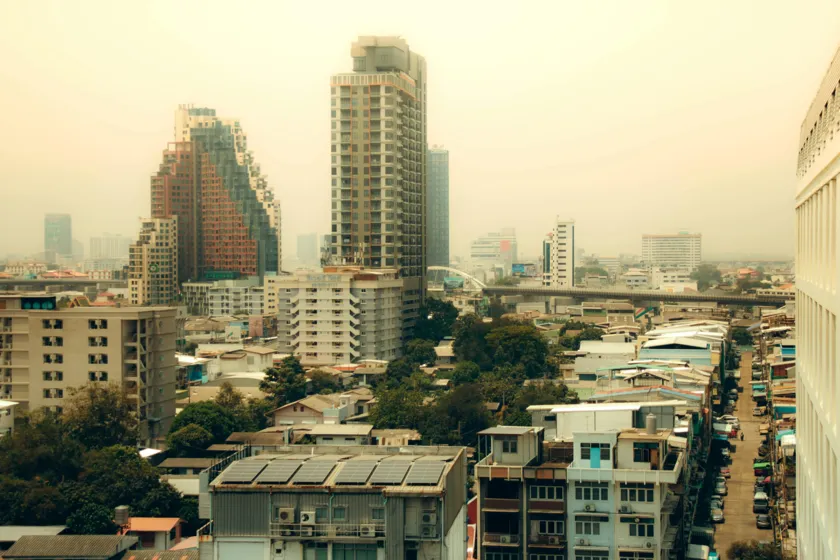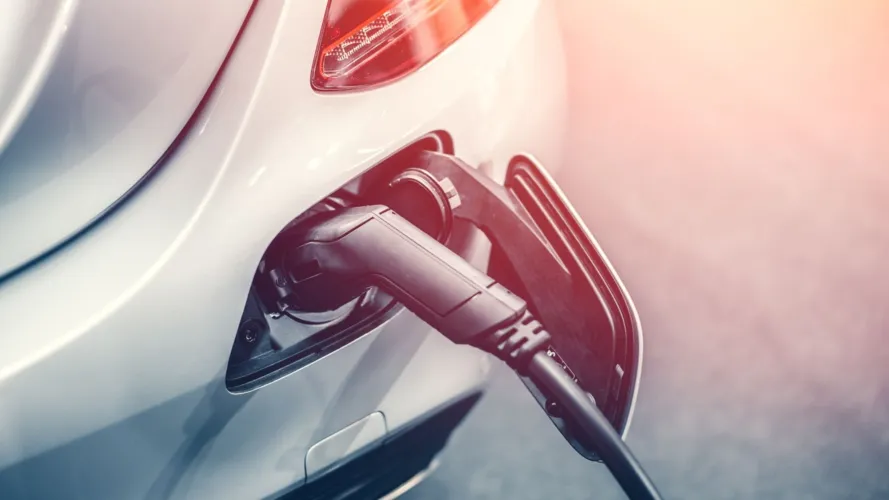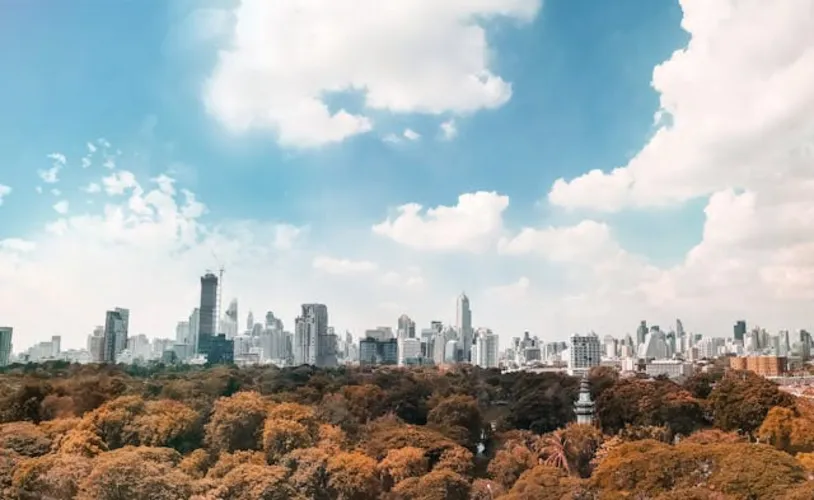Rising PM2.5 levels in Bangkok expose residents to severe health risks as authorities scramble with emergency responses and long-term pollution control plans.
 Source: Smart Air Filters – Bangkok Air Pollution Analysis
Source: Smart Air Filters – Bangkok Air Pollution Analysis
Bangkok’s skyline, once a symbol of modern Thailand, is now frequently shrouded in a gray haze. During the dry season from November to April, PM2.5 levels regularly exceed World Health Organization (WHO) guidelines, posing serious threats to public health. These microscopic particles are small enough to enter the bloodstream through the lungs, leading to long-term health damage. The city’s air quality often drops to hazardous levels, forcing schools to close, residents to stay indoors, and workers to rely on masks to breathe safely.
Between January and mid-February 2025, hospitals across Bangkok recorded over 66,000 pollution-related illnesses — a figure that reflects how deeply air pollution has penetrated daily life. This alarming number includes respiratory infections, asthma, and cardiovascular conditions. Doctors have warned that constant exposure to polluted air could worsen chronic illnesses and reduce life expectancy. Across Southeast Asia, air pollution already contributes to around 900,000 premature deaths every year, making it one of the region’s most pressing health challenges.
PM2.5 exposure is particularly harmful because of its size and composition. The particles can carry heavy metals and toxic chemicals, which, when inhaled, trigger asthma attacks, lung inflammation, and increase the risks of heart disease, stroke, and cancer. For vulnerable groups such as children, the elderly, and pregnant women, even short-term exposure can cause serious complications.
The Sources Behind Bangkok’s Air Pollution
The causes of Bangkok’s worsening air quality are multifaceted. Studies have identified four major sources fueling the smog: vehicle emissions, construction dust, industrial discharges, and agricultural burning in nearby provinces.
Bangkok’s dense traffic is a daily reality for millions, and with most vehicles still running on fossil fuels, transport remains the largest contributor. The city’s rapid urbanization also brings new construction projects that constantly release dust and fine particles into the air. Industrial zones around the capital emit additional pollutants, while seasonal crop burning in surrounding provinces sends smoke drifting into the city.
The problem worsens during the dry season when weather conditions trap pollutants close to the ground, preventing dispersion. As a result, Bangkok’s Air Quality Index (AQI) often surges into the “hazardous” range, prompting health warnings. Data has shown that each 10 µg/m³ increase in PM10 concentration is associated with a 1.3% rise in total mortality and nearly a 2% increase in cardiovascular deaths among Bangkok residents. These findings underline the deadly toll of prolonged exposure.
Policy Responses and Government Interventions
Recognizing the escalating crisis, Thai authorities have stepped up efforts to protect the public and address pollution at its source. Since January 2025, the government has distributed nearly one million PM2.5 masks to residents in high-risk areas. Schools and offices have been encouraged to adopt remote work and learning models during peak smog days, while the Ministry of Public Health has set up dust-free rooms in hospitals and public buildings to provide safe spaces for vulnerable populations.
In addition, air quality surveillance zones have been expanded across Bangkok to improve real-time monitoring and allow faster responses during pollution spikes. The Bangkok Metropolitan Administration (BMA) is also tightening rules on vehicle emissions and encouraging the use of electric vehicles and public transport to cut down traffic-related pollution.
However, experts emphasize that these emergency actions need to be paired with long-term environmental reforms. Stronger enforcement of industrial emission standards, stricter construction site regulations, and investment in clean energy are essential for sustainable change. Addressing agricultural burning remains one of the biggest challenges, as it involves cooperation with farmers and neighboring provinces.
Across Southeast Asia, governments are also exploring regional air quality agreements to tackle transboundary haze that often drifts from agricultural fires. Collaborative action, backed by technology and stricter regulations, could play a decisive role in improving air quality not just in Bangkok, but across the region.
Bangkok’s struggle with air pollution reveals a broader truth — that economic growth cannot come at the cost of public health. The crisis has become both a warning and a call for cleaner development models. As Thailand continues its push for sustainability under national strategies like Bio-Circular-Green (BCG) Economy, tackling air pollution will remain central to protecting citizens’ health and ensuring a livable urban future.
Read also: Thailand Renewable Energy Policy Targets a Greener 2036







